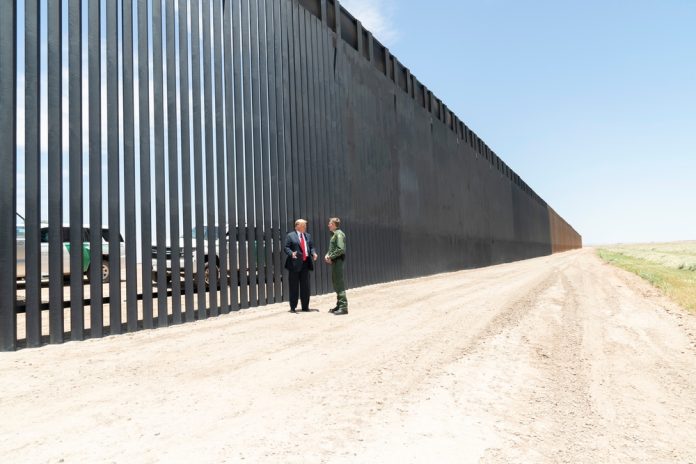
President Trump’s authorization of military control over a stretch of federal land along the U.S.-Mexico border has ignited a heated national debate.
Top Takeaways
- President Trump has given the U.S. military control over a 60-foot-wide section of land known as the Roosevelt Reservation along the southern border.
- The Department of Defense now has jurisdiction over this land spanning California, Arizona, and New Mexico.
- Critics argue this move could violate the Posse Comitatus Act, which limits military involvement in domestic affairs.
- The administration views the measure as a necessary response to security threats at the border.
Trump’s Directive on Military Control
President Trump has formally authorized U.S. military troops to assume control over a particular section of federal land at the southern border, known as the Roosevelt Reservation. This mandate gives the Department of Defense the authority over this 60-foot-wide stretch spanning across California, Arizona, and New Mexico. The move permits the military to install barriers and surveillance systems, enhancing border security measures.
The authorization, communicated through a memorandum addressed to key government secretaries, enables military activities on these lands, excluding Federal Indian Reservations. Homeland Security Secretary Kristi Noem underscored the necessity of maintaining military presence until the border achieves a historic low of encounters with illegal entrants.
🚨🇺🇸TRUMP JUST SENT THE MILITARY TO THE SOUTHERN BORDER
Big move alert: Trump just gave the military control over parts of the southern border. Yep, it’s not just border patrol anymore—this is officially a mission.
He’s turning federal lands into National Defense Areas… https://t.co/uFZW7FlaRA pic.twitter.com/cKbkZylJwd
— Mario Nawfal (@MarioNawfal) April 13, 2025
Legal Implications and Criticism
While the administration emphasizes the strategic importance of this action, critics argue that it may contravene the Posse Comitatus Act, which limits military involvement in civilian law enforcement. Legal challenges are anticipated, with detractors pointing to potential constitutional violations. Representative Ro Khanna voiced concerns, asserting that such a military role for domestic law enforcement could breach constitutional constraints and anticipates that the U.S. Supreme Court will oppose the policy.
“It’s a longstanding law that you can’t use the military for domestic enforcement. It’s a violation of the Constitution. I’m hopeful the Supreme Court would, 9-0, rule that way,” asserted Rep. Ro Khanna.
The directive extends the potential for military activities to other federal lands along the border, directing the Secretary of Defense to assess necessary measures for ensuring border security. With the land reclassified as a “military installation” and “National Defense Area,” military jurisdictions create complex legal landscapes affecting immigration enforcement.
Long-term Strategic Implications
In the face of critique, the administration maintains that the military’s jurisdiction is necessary to meet ongoing border challenges effectively. Aaron Reichlin-Melnick criticized the policy as an attempt to sidestep legal restrictions by classifying migrant apprehensions as trespassing on military property, bringing attention to substantial legal and ethical issues surrounding the move.
President Trump’s reiteration of the border being “under attack” from various threats illustrates the intent to maintain a strong military presence for the foreseeable future. The administration has not suggested the measure is temporary, highlighting its commitment to tackling the challenges posed by undocumented immigration using military might. As the situation develops, the Secretary of Defense may further expand military operations to additional sections of the southern border.
Despite the opposition, Trump’s supporters remain largely in his corner. Stay tuned for update as this story develops.







